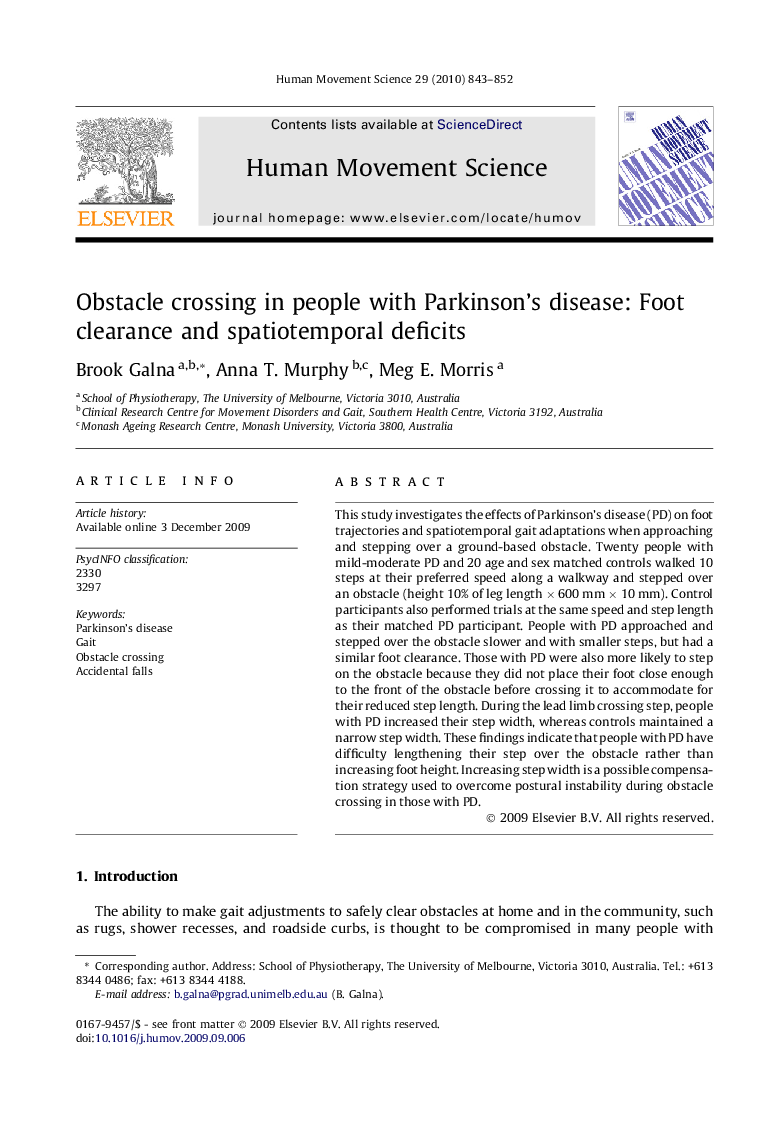| Article ID | Journal | Published Year | Pages | File Type |
|---|---|---|---|---|
| 928719 | Human Movement Science | 2010 | 10 Pages |
This study investigates the effects of Parkinson’s disease (PD) on foot trajectories and spatiotemporal gait adaptations when approaching and stepping over a ground-based obstacle. Twenty people with mild-moderate PD and 20 age and sex matched controls walked 10 steps at their preferred speed along a walkway and stepped over an obstacle (height 10% of leg length × 600 mm × 10 mm). Control participants also performed trials at the same speed and step length as their matched PD participant. People with PD approached and stepped over the obstacle slower and with smaller steps, but had a similar foot clearance. Those with PD were also more likely to step on the obstacle because they did not place their foot close enough to the front of the obstacle before crossing it to accommodate for their reduced step length. During the lead limb crossing step, people with PD increased their step width, whereas controls maintained a narrow step width. These findings indicate that people with PD have difficulty lengthening their step over the obstacle rather than increasing foot height. Increasing step width is a possible compensation strategy used to overcome postural instability during obstacle crossing in those with PD.
